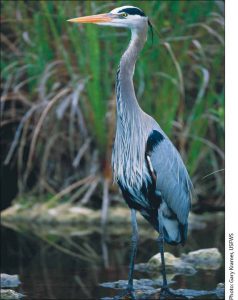Introduction
Quick Navigation
Humans are highly intelligent beings with an intense curiosity that makes them concerned about everything they see. This concern and curiosity manifest in several aspects of life, which include spiritual, social, environmental, and biological. Biologically, humans are interested in the study of plants and animals in their environment. From studying, most people develop passion which turns the learning of living things into a hobby. The concept of birding and birdwatching was developed from people’s love and passion for birds as they provide satisfaction and a form of fulfillment. These two activities are also key for ornithologists who majorly study birds.
See also: birds of wisconsin
The art of watching birds is influenced by certain things, including the geographic topography of a certain region and the population of birds in an area. Birding is less enjoyable in regions with low bird numbers as it subtly defeats the purpose of the activity. This is why most countries and continents put extra efforts into maintaining their environment to support birds and animals in general. Birding is a popular hobby in Europe and North America as these regions have suitable landscapes and numerous bird species native to them.
Check also; birds of virginia
Asia as a continent is gradually embracing birding, but most of the birds there are introduced species and migratory creatures which may not often be seen. The regions that make up the United States boast largely of a huge number of the world’s bird population, making the country very dear to birders. The state of Tennessee is home to various bird species, including the rare ones.
See this: Birds of south carolina
Environmental description of Tennessee
The Southeastern state with Nashville as its capital boasts of an estimated population of seven million people and is also known as the Volunteer State. The state’s economy, which was once focused on agriculture, now has diverse sources of revenues such as health care, automotive, tourism, and music industries.
The physical environment of this state is filled with lush green lands, deciduous and coniferous forests, fast-flowing streams and lakes, and a few rocky cliffs and hills. This extraordinary landscape greatly encourages wildlife and animals, which in turn are present in large numbers. Although human activities have over the years affected several natural habitats, Tennessee is still home to a large number of animals, including varieties of bird species. Tourism which is one of the sectors of the state’s economy, is encouraged by the numerous wildlife conservation reserves present there.
Check this out; birds of ohio
Native birds of Tennessee
The airspace of this space is usually filled with several numbers of birds flying daily as it is a haven for most members of the aviary world. Several bird species are residents all through the year, while some come and go. Birding opportunities in this state are cherished greatly by bird enthusiasts due to the promise of the sight of rare and threatened species. A total of four hundred and twenty-three species of bird are found in Tennessee. Some of the bird species are great blue heron, green heron, Eastern screech owl, Eurasian collared dove, American kestrel, Eastern kingbird, American crow, purple martin, gray catbird, and hermit thrush.
Great blue heron
This large bird, often mistaken for the crane, is the most easily spotted member of the heron family in Tennessee. These birds are available all year as they are permanent residents and are usually found in both saltwater and freshwater habitats like lakeshores, rivers, ponds, and streams. They are signatory, and iconic birds of Tennessee as their population in the region is fairly high. They often feed on invertebrates, reptiles, and small mammals, which they stab and pick with their bill. Birders usually like to watch them forage for food as it is always an incredible sight. These birds mostly eat fish but occasionally add mice to their diet.
See also; birds of missouri
Green heron
This wading bird which is very abundant in this region, is small and dark-colored, usually found in freshwater habitats like ponds and streams. It feeds primarily on small fish, insects, and frogs and is not very social as it prefers to be alone during nesting. This waterbird is often considered intelligent as they employ the use of tools to survive. This is seen in its use of bait when fishing to attract its prey and make it unable to swim away while they pounce on it.
Check out; birds of minnesota
Eastern screech owl
Like most owls, this bird is nocturnal, but its small body and song, which is very different from the usual hooting of owls, distinguishes this particular species. It is not a migratory creature and can be commonly found in rural and urban areas but is usually heard than seen. Habitually it keeps to trees in deciduous and coniferous forests, often feeding on insects and other small invertebrates. Of all the owls in Tennessee, its population remains the highest recorded presently.
Eurasian collared dove
These flying creatures are very similar to the mourning dove but larger, and this sets them apart. They are very friendly and highly human tolerant as they are often found in urban and suburban areas. Sights of them are quite common in cities as they flock around in search of grains which they mostly feed on. These birds are permanent residents of Tennessee, and birders cannot miss the sight of these flying wonders.
American kestrel
They are small birds with long pointed wings and long tails usually seen more than most hawks because they make both wildlands and agricultural areas their habitats. They feed on reptiles, small mammals, and giant insects and are often sighted along pastures and roadsides, making them a regularly seen feature of Tennesse. In cases where there is nothing for them to perch while hunting, they briefly suspend themselves while still in pursuit.
See this; can birds eat almonds
Conclusion
The state of Tennessee is richly blessed with hundreds of bird species, most of which are permanent residents of the area, which is an absolute delight to birdwatchers.

